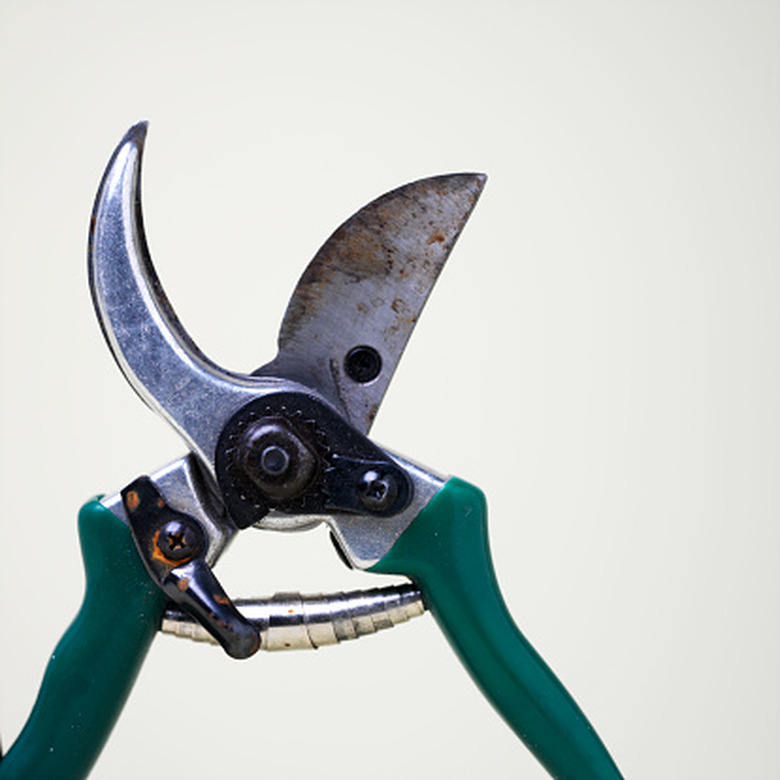How To Prune Coral Bells
Coral bells, known botanically as Heuchera, is a genus of low growing perennial evergreen plants containing more than 50 species and untold numbers of hybrid cultivars. Coral bells are named for the form of their flowers, but the plants are equally prized for their foliage, which can vary in color and pattern but always grows in a large rosette form. Pruning requirements are minimal where the plant is winter hardy and slightly more involved in cooler climes where the top foliage dies back in winter. Light grooming and deadheading also keeps the plants looking their best and encourages repeat blooming.
Step 1
Prune your coral bells in the early spring to remove both dead and living foliage growth and to improve the plant's form. Prune throughout the prime growing season to deadhead spent flowers or fading foliage.
Step 2
Trim away all dead and damaged leaves from the plant in the early spring, before new growth appears but after the last hard frost. Sever dead stalks down to the soil line but cut damaged leaves with live green stalks to just 2 inches above the soil line. Pick up and discard all cuttings so they do not decay in and around the base of the plant.
- Coral bells, known botanically as Heuchera, is a genus of low growing perennial evergreen plants containing more than 50 species and untold numbers of hybrid cultivars.
- Pick up and discard all cuttings so they do not decay in and around the base of the plant.
Step 3
Cut away errant foliage to create a more symmetrical or pleasing shape to the rosette form, if desired. Take the unwanted stalk down to the base of the plant at the soil line.
Step 4
Deadhead spent flower stalks by severing each stalk at its base just above the soil. Pull the spent stalk from the rosette and compost or discard it. Repeat this process throughout the blooming season to encourage new flower spike development.
Step 5
Remove dead, badly damaged or discolored leaves throughout the growing season, if needed, to keep the plant looking fresh and healthy. Lack of moisture or excess sun can cause leaves to brown and shrivel, and they will not recover. Sever the leaf stalk at the soil line or up to 2 inches above the soil line and compost or discard the leaves.
- Cut away errant foliage to create a more symmetrical or pleasing shape to the rosette form, if desired.
- Sever the leaf stalk at the soil line or up to 2 inches above the soil line and compost or discard the leaves.
